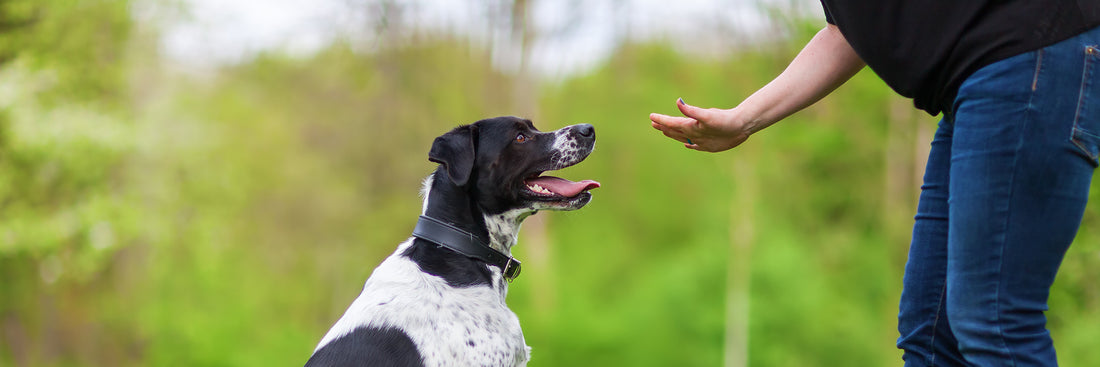If you’re anything like us and when you've happened to catch sight of the immaculate, beautifully trained dogs on television strutting their stuff at Crufts, it’s probably make you smile to imagine how your own pet would fare in the prestigious competition (“So far so good… ah, oh dear – he’s left the course to go and sniff the judges!”). With that in mind, we thought we’d share some easy training tips…
Always use positive reinforcement
Positive reinforcement is the act of encouraging your pet to repeat good behaviours by pairing a reward with a command. With practice, he learns to associate the pleasant feeling of the reward (such as a treat, warm praise and a lovely head rub) with the behaviour, and so will start to perform the behaviour on command.
Positive reinforcement is effective, kind, and enjoyable for your pet – wags all round!
Practice little and often
The best way to learn a new skill is to practice little and often (if you think about it, it goes for most things we learn to do). If you want to teach your dog to sit, for example, practice every day for a short while, with plenty of treats and praise, to make sure your dog doesn’t become tired, stressed or bored.
Be consistent
Make sure that everyone who interacts with your dog is using the same commands. If everyone in your household is using different commands (and someone is still letting him cuddle up on the sofa), you’ll have one rather confused dog.
Timing is key
A clicker can help your dog to associate the exact behaviour you want with the reward. Click just as your dog performs the command, (e.g. sits) and then present the treat. This will help to ensure he isn’t left wondering what he did to receive the treat. Remember to always give your dog a treat after clicking, even if you click by accident, to cement the association in his head between the click and a reward.
Take care not to reinforce the wrong behaviours
It can be difficult, but try not to give in to your dog’s persistence. For instance, if he barks at you until you’ll throw his ball, and then you do, he’ll think that all he needs to do is keep barking to get you to throw. Instead, ignore him when he barks, or make sure he’s performed a positive command, such as “sit” before you’ll throw.


Recent post